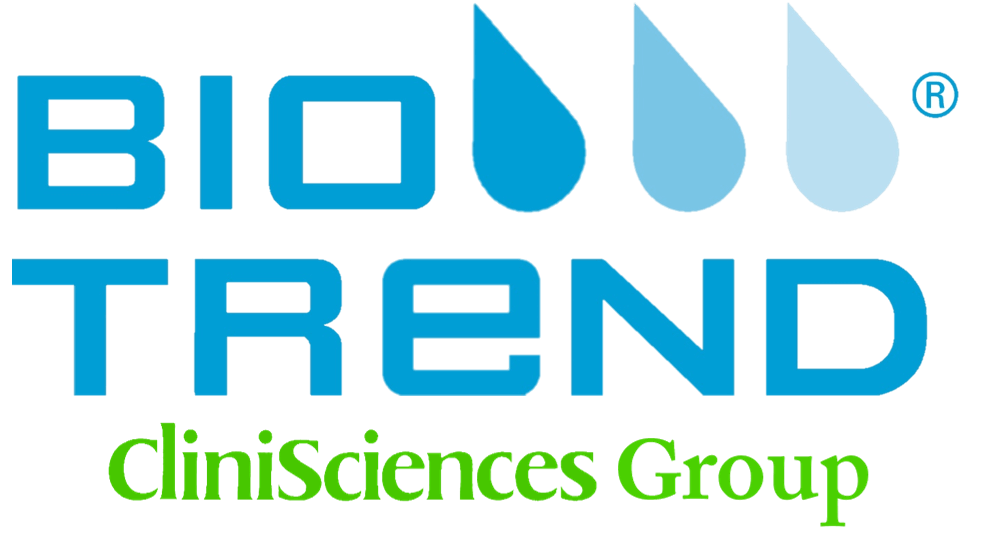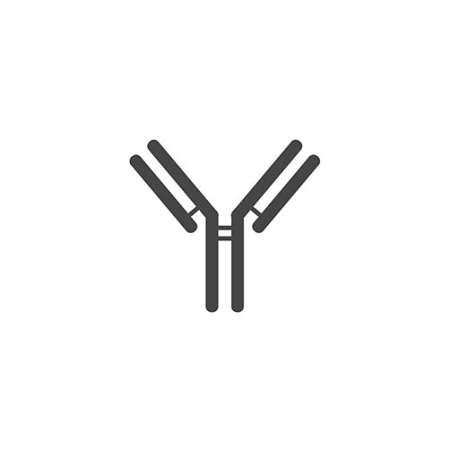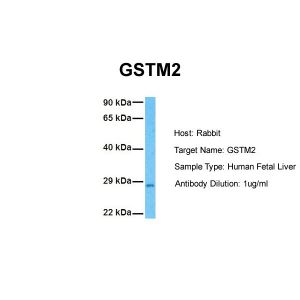GSTM2 Antibody - N-terminal region : FITC
Cat# ARP41818_P050-FITC
Size : 100ul
Brand : Aviva Systems Biology
| Datasheets/Manuals | Printable datasheet for anti-GSTM2 (ARP41818_P050-FITC) antibody |
|---|
| Predicted Species Reactivity | Human, Zebrafish |
|---|---|
| Product Format | Liquid. Purified antibody supplied in 1x PBS buffer. |
| Clonality | Polyclonal |
| Host | Rabbit |
| Conjugation | FITC: Fluorescein Isothiocyanate |
| Application | IHC, WB |
| Reconstitution and Storage | All conjugated antibodies should be stored in light-protected vials or covered with a light protecting material (i.e. aluminum foil). Conjugated antibodies are stable for at least 12 months at 4C. If longer storage is desired (24 months), conjugates may be diluted with up to 50% glycerol and stored at -20C to -80C. Freezing and thawing conjugated antibodies will compromise enzyme activity as well as antibody binding. |
| Immunogen | The immunogen is a synthetic peptide directed towards the N terminal region of human GSTM2 |
| Purification | Affinity Purified |
| Predicted Homology Based on Immunogen Sequence | Human: 100%; Zebrafish: 79% |
| Peptide Sequence | Synthetic peptide located within the following region: TQSNAILRYIARKHNLCGESEKEQIREDILENQFMDSRMQLAKLCYDPDF |
| Concentration | 0.5 mg/ml |
| Blocking Peptide | For anti-GSTM2 (ARP41818_P050-FITC) antibody is Catalog # AAP41818 (Previous Catalog # AAPP10866) |
| Reference | Hayek,T., (2006) Atherosclerosis 184 (2), 404-412 |
|---|---|
| Gene Symbol | GSTM2 |
| Gene Full Name | Glutathione S-transferase mu 2 (muscle) |
| Alias Symbols | GST4, GSTM, GTHMUS, GSTM2-2 |
| NCBI Gene Id | 2946 |
| Protein Name | Glutathione S-transferase Mu 2 |
| Description of Target | At present, eight distinct classes of the soluble cytoplasmic mammalian glutathione S-transferases have been identified: alpha, kappa, mu, omega, pi, sigma, theta and zeta. GSTM2 is a glutathione S-transferase that belongs to the mu class. The mu class of enzymes functions in the detoxification of electrophilic compounds, including carcinogens, therapeutic drugs, environmental toxins and products of oxidative stress, by conjugation with glutathione.Cytosolic and membrane-bound forms of glutathione S-transferase are encoded by two distinct supergene families. At present, eight distinct classes of the soluble cytoplasmic mammalian glutathione S-transferases have been identified: alpha, kappa, mu, omega, pi, sigma, theta and zeta. This gene encodes a glutathione S-transferase that belongs to the mu class. The mu class of enzymes functions in the detoxification of electrophilic compounds, including carcinogens, therapeutic drugs, environmental toxins and products of oxidative stress, by conjugation with glutathione. The genes encoding the mu class of enzymes are organized in a gene cluster on chromosome 1p13.3 and are known to be highly polymorphic. These genetic variations can change an individual's susceptibility to carcinogens and toxins as well as affect the toxicity and efficacy of certain drugs. |
| Uniprot ID | P28161 |
| Protein Accession # | NP_000839 |
| Nucleotide Accession # | NM_000848 |
| Protein Size (# AA) | 218 |
| Molecular Weight | 26kDa |
| Protein Interactions | UBC; GSTM3; GSTM2; GSTM1; |





